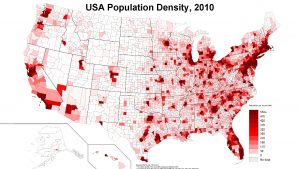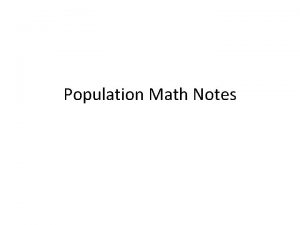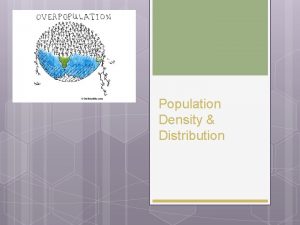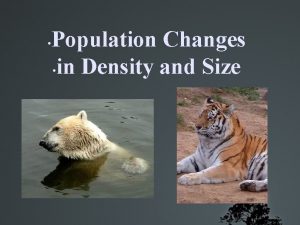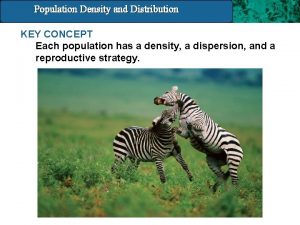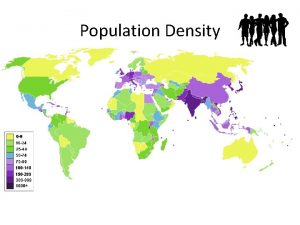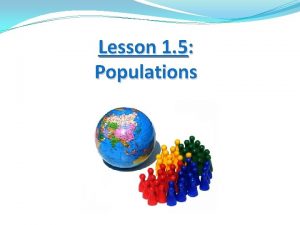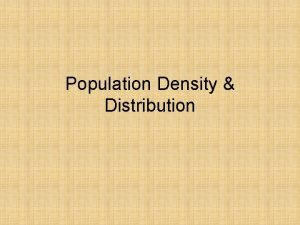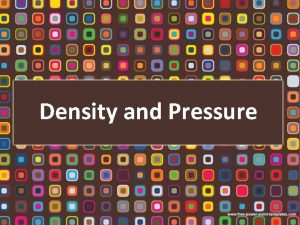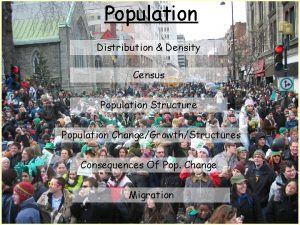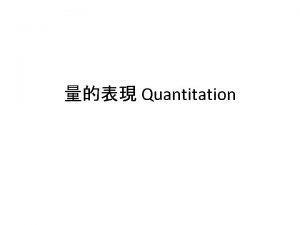14 3 Population Density and Dist KEY CONCEPT














- Slides: 14

14. 3 Population Density and Dist. KEY CONCEPT Each population has a density, a dispersion, and a reproductive strategy.

14. 3 Population Density and Distribution. Geographic dispersion of a population shows how individuals in a population are spaced. Population dispersion refers to how a population is spread in an area. Clumped dispersion Uniform dispersion Random dispersion

14. 3 Population Density and Dist. Population dispersion clumped

14. 3 Population Density and Dist. Population dispersion uniform

14. 3 Population Density and Dist. Population dispersion random

14. 4 Population Growth Patterns KEY CONCEPT Populations grow in predictable patterns.

14. 4 Population Growth Patterns Changes in a population’s size are determined by immigration, births, emigration, and deaths. Four factors affect the size of a population. immigration births emigration deaths

14. 4 Population Growth Patterns Population growth is based on available resources. Exponential growth is a rapid population increase due to an abundance of resources.

14. 4 Population Growth Patterns Population growth is based on available resources. Logistic growth is due to a population facing limited resources.

14. 4 Population Growth Patterns Carrying capacity is the maximum number of individuals in a population that the environment can support. • A population crash is a dramatic decline in the size of a population over a short period of time.

14. 4 Population Growth Patterns Ecological limit growth. population Ecological factors limit population growth. A limiting factor is something that keeps the size of a population down. • Density-dependent limiting factors are affected by the number of individuals in a given area.

14. 4 Population Growth Patterns Density-dependent limiting factors are affected by the number of individuals in a given area. – predation – competition – parasitism and disease

14. 4 Population Growth Patterns Predator-Prey Graph

14. 4 Population Growth Patterns Density-independent limiting factors limit a population’s growth regardless of the density. – unusual weather – natural disasters – human activities
 Physiological density
Physiological density Chapter 4 population ecology test answer key
Chapter 4 population ecology test answer key Population ecology section 1 population dynamics
Population ecology section 1 population dynamics Population ecology section 1 population dynamics answer key
Population ecology section 1 population dynamics answer key Vulnus combustio
Vulnus combustio Z score tble
Z score tble Density and specific gravity formula
Density and specific gravity formula Linear density of bcc
Linear density of bcc Linear density and planar density
Linear density and planar density Nda full dac
Nda full dac Countries with high physiological density
Countries with high physiological density Tennessee population density map
Tennessee population density map Pop density formula
Pop density formula Nj population density
Nj population density Physiological density
Physiological density











